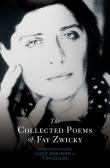'Gathered here for the first time are Fay Zwicky's seven collections of poetry, published between 1975 and 2006, along with previously uncollected poems zwicky has chosen to preserve, and her essay 'Border Crossings' (hereafter 'BC'), which eloquently and engagingly recorded the growth of her imagination and provides valuable insights into the atmosphere and character of her formative years. Zwicky has had a long and distinguished career in the arts: first as a classical pianist; later as a literature teacher, literary critic, editor and sometime short-story writer; but foremost as a poet. She has not been in the public eye very much in recent years - like many of her generation she has chosen not to go online - but nor has she remained silent. She has written and published individual poems and maintained the journal that she has been keeping almost continually for more than forty years. a writer's companion book, a poetry workbook, and a record of Zwicky's response to public and private events, the journal integrates and impassioned dialogue with what she is reading, often satirical accounts of her dreams, and candid (as well as guarded) quarrels with herself, friends and family, ideas, opinions, and the whole business of living a literary and creative life. One of the journal's big recurring questions, indeed is : how does a poet sustain a creative life in the unpromising soil of an isolated city of the edge of a desert? How does she go on fighting, in James Tulip's words, to affirm over and against an oppressive Australian silence a human (and particularly a woman's) voice and feelings' (31-32).' (Introduction)



